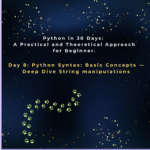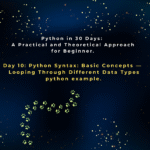Introduction
Welcome to Day 9! Up to this point, your code has been executed from top to bottom, one line at a time. Today, you’ll learn about one of the most fundamental concepts in programming: loops. A loop is a way to repeat a block of code multiple times, which is essential for automating tasks and processing collections of data. Understanding the nuances of the Python for loop and the Python while loop will significantly enhance your programming capabilities.
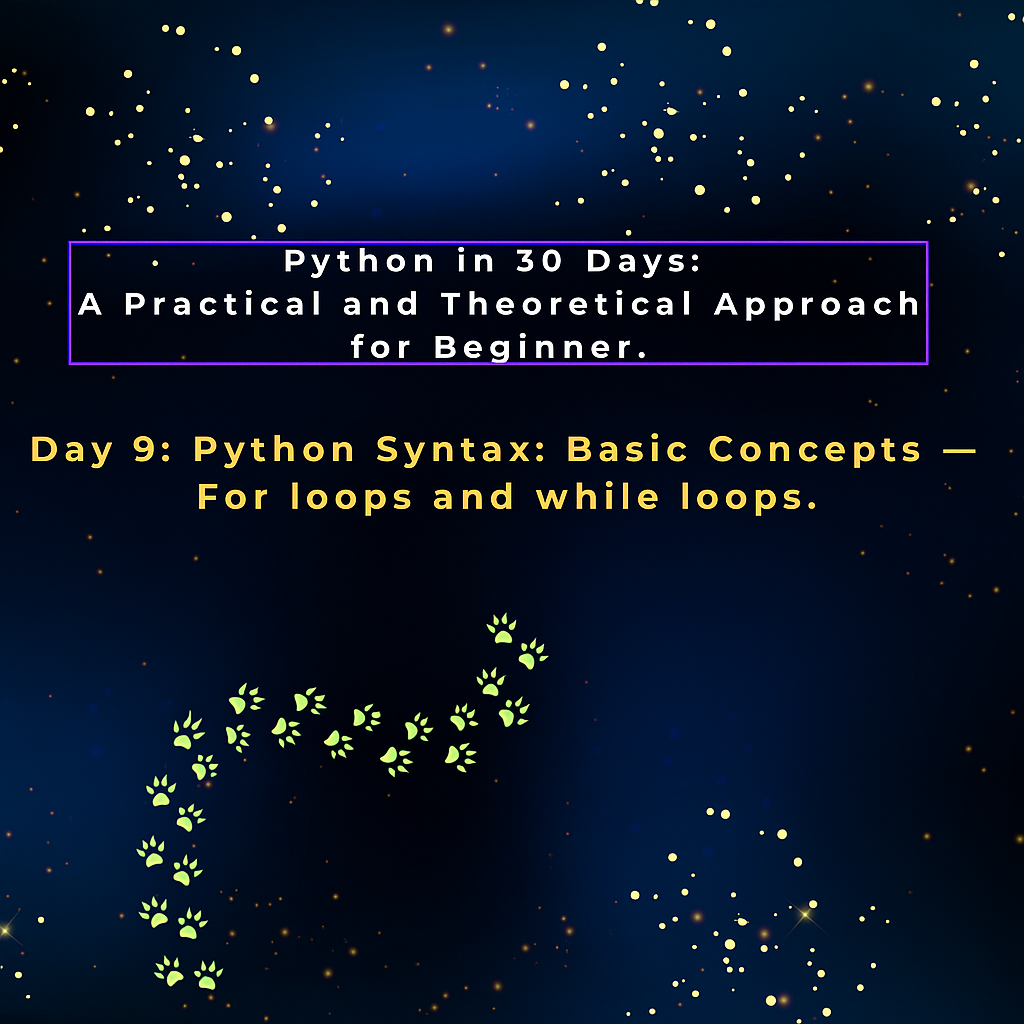
The Python For Loop
A Python for loop is used to iterate over a sequence (like a list, a string, or a range of numbers). It repeats a block of code for each item in that sequence. This is the most common type of loop in Python because it’s simple and elegant for iterating through collections.
Syntax :
Pythonfor item in sequence:
# Code to be executed for each item
Example 1: Using range() in a For Loop
This is the classic example for repeating an action a set number of times. The range() function is often used with a Python for loop.
Python# Print "Hello" 3 times
for i in range(3):
print("Hello")
# Output:
# Hello
# Hello
# Hello
The range(3) function generates a sequence of numbers from 0 up to (but not including) 3. The Python for loop runs for each of those numbers (0, 1, 2), assigning each value to the loop variable i in each iteration. While we don’t use i in the print statement here, it’s often used to access elements by index or perform other calculations.
Example 2: Looping Through a List with a For Loop
A more common use case for a Python for loop is to iterate through a list of items and perform an action on each one.
Python
fruits = ["apple", "banana", "cherry"]
for fruit in fruits:
print(f"I have a {fruit}.")
# Output:
# I have a apple.
# I have a banana.
# I have a cherry.
In this example, the Python for loop iterates through each fruit in the fruits list. In each iteration, the current fruit is assigned to the loop variable fruit, and the indented code block is executed.
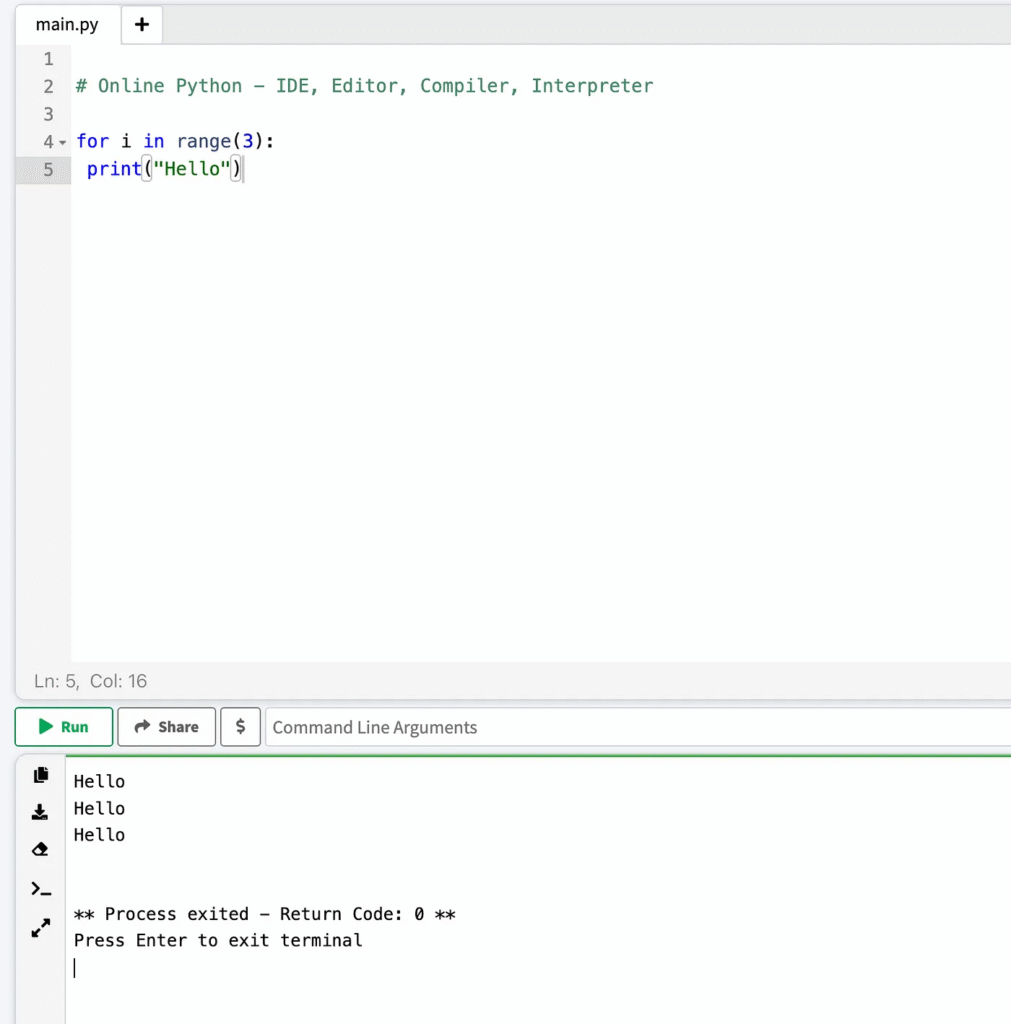
The Python While Loop
A Python while loop is different. It repeats a block of code as long as a specified condition is True. The loop continues to execute until the condition becomes False.
Syntax :
Pythonwhile condition:
# Code to be executed as long as the condition is True
Example: A Simple Counter with a While Loop
This example performs the same task as the first Python for loop, but using a different structure with a Python while loop.
Pythoncount = 0
while count < 3:
print("Hello")
count += 1
# Output:
# Hello
# Hello
# Hello
Here, the code inside the Python while loop runs as long as the variable count is less than 3. Inside the loop, we increment count by 1 with count += 1 to ensure the loop eventually ends. Without this line, the condition (count < 3) would always be True, and you would have an infinite loop!
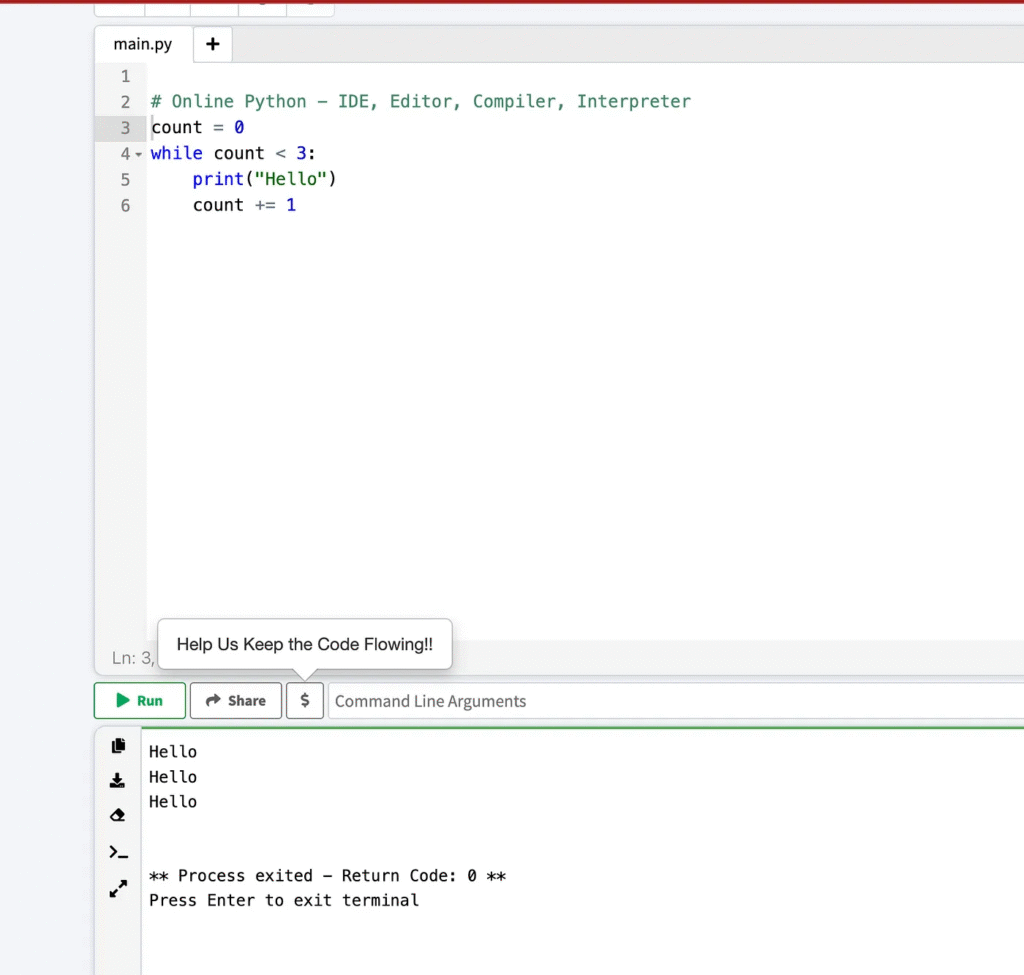
Advantages of Using Loops
Loops are not just a convenience; they are a cornerstone of efficient programming. Understanding the advantages of using loops, whether a Python for loop or a Python while loop, highlights their importance.
- Avoid Repetition: Instead of writing the same lines of code over and over again, you can write them once inside a loop. This makes your code more concise and less prone to errors.
- Cleaner and Shorter Code: Loops significantly reduce the number of lines of code, making your program easier to read, maintain, and debug. This improves code clarity and reduces the effort needed for updates.
- Automate Repetitive Tasks: Loops are perfect for tasks like processing all the items in a list (using a Python for loop), reading a file line by line, or continuously checking for a condition to be met (using a Python while loop). They allow your program to be dynamic and scale to any amount of data without requiring manual repetition of code.
Summary
Today, you learned the basics of both Python for loop and Python while loop.
- A Python for loop is ideal when you know the number of iterations or want to process each item in a sequence. It’s often used with the
range()function or when iterating through data structures like lists and strings. - A Python while loop is best when you need to repeat a task as long as a condition remains true, and you might not know in advance how many times the loop will execute. It’s crucial to ensure that the condition eventually becomes
Falseto avoid infinite loops.
Mastering these two types of loops is a key step toward writing powerful and automated programs. In the coming days, we’ll explore how to use these loops in more complex scenarios.
The journey of learning what Python is is an exciting one, and this “30 Days of Python” series is designed to be your roadmap. Happy coding!
One-Week Trip Itinerary to Dharamshala & Nearby Attractions
Introduction Spending…
3-Day Trip Itinerary to Dharamshala & McLeod Ganj
Introduction: Planning…
Explore Local Markets in Dharamshala – A Shopper’s Paradise
Introduction: Local…
Best Restaurants in Dharamshala – A Food Lover’s Guide
Introduction Dharamshala…
Temples in Dharamshala – Spiritual Gems of the Himalayas
Introduction Dharamshala,…
Discover the Best Cafés in Dharamshala
☕ Cafés…







